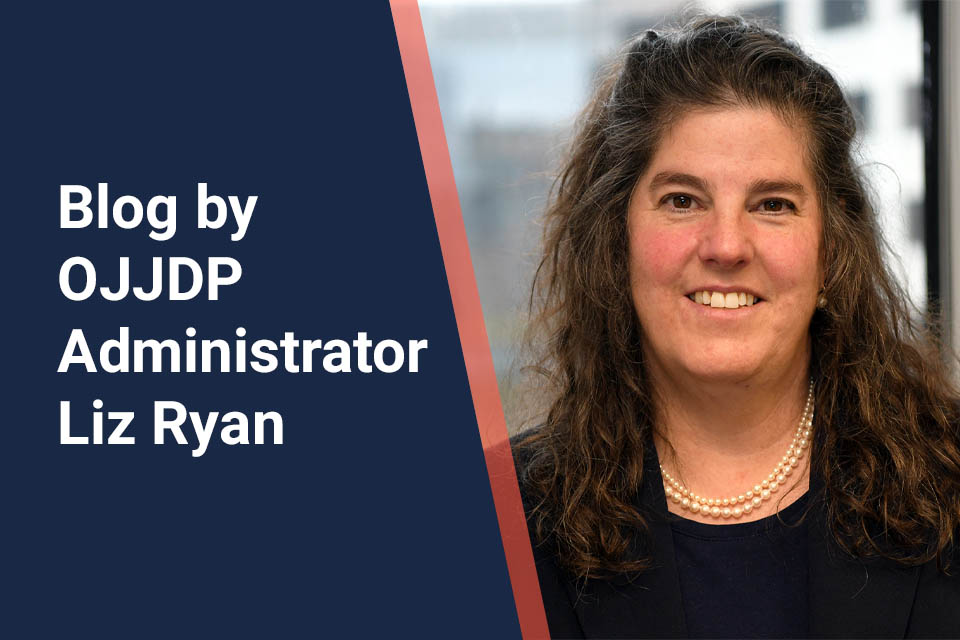Archival Notice
This is an archive page that is no longer being updated. It may contain outdated information and links may no longer function as originally intended.
October is Youth Justice Action Month, a national observance underscoring the need for equity in the juvenile justice system and for centering directly impacted youth and their families to advance youth justice. OJJDP is committed to transforming the juvenile justice system to promote the welfare of all youth. Three priorities guide our work: 1) Treat children as children. 2) Serve children at home, with their families and in their communities. 3) Open up opportunities for system-involved youth. My blog posts during Youth Justice Action Month will focus on these priorities and how OJJDP is working to achieve them. The following post focuses on the second priority, Serving children at home, with their families and in their communities.
Young people who break the law must be held accountable for their wrongs, but incarceration is seldom the answer. Too often, youth confinement succeeds only in damaging young people and diminishing their chances for a healthy, productive future. Serving justice-involved youth in their communities is far more effective than locking them up—and it’s the right thing to do.
Heartbreaking headlines describe atrocities young people have suffered while confined, from physical and sexual abuse to death by suicide. Hundreds of other tragedies fail to make the headlines. I’m thinking about kids who don’t receive a proper education while incarcerated, or the ones released without housing in place, who wind up homeless and may resort to breaking the law to make money for food.
There are kids like them in every state, nationwide.
This country devotes the majority of our juvenile justice funding to a strategy with terrible outcomes. Resources are better invested in evidence-based and evidence-informed programs that serve youth in their communities: keeping them in school and at work, connected with their families. Community-based programs are known to be effective at positively impacting youth behavior and reducing reoffending. In the long run, they are far less costly, both financially and in damage done to our youth, families, and communities.
More than two-thirds of youth involved with law enforcement or the juvenile justice system have already suffered trauma—from neglect to sexual abuse to family violence. Studies show that adverse childhood experiences—ACEs—can have an enormous impact on a child’s likelihood to suffer or perpetrate future violence. Confinement often traumatizes them further. Research underscores the damage youth experience when confined, from disruptions in their education to delayed psychosocial development and sexual victimization.
Our kids deserve better. Under my leadership, one of OJJDP’s top three priorities is to serve justice-involved young people in their own communities, where many have family and other support systems to assist them.
According to states' recidivism data, approximately 55 percent of confined youth are rearrested within one year of their release, with almost half of them returning to residential facilities. As I’ve noted before, the United States spends an estimated $5 billion each year to incarcerate children. While incarceration punishes, it does not successfully promote public safety or rehabilitate youth.
Replacing incarceration with community-based services has broad support. In a recent survey, more than three-quarters of Americans polled supported prevention and rehabilitation services over incarceration.
OJJDP is working to develop more and better alternatives to youth incarceration, to improve community safety and help youth get back on track. Here are a few examples:
- The fiscal year (FY) 2022 Community-Based Alternatives to Youth Incarceration Initiative. OJJDP will invest up to $4.5 million to support innovative strategies that close and repurpose youth correctional facilities, and that reinvest savings into programs and services that promote positive youth outcomes, increase public safety, and strengthen families and neighborhoods.
- The FY 2022 Reducing Risk for Girls in the Juvenile Justice System program. We are providing funding under two categories. One supports community development, enhancement, or expansion of early intervention programs and treatment services for system-involved girls. The second funds training and technical assistance for the community grantees, to help implement their strategies.
- Mentoring—long a central focus of OJJDP's programming. The Office awarded more than $1.2 billion in grants to mentoring organizations in FYs 2008 to 2021, including $89.4 million for programs and services in FY 2021. Youth need to know they matter to the people in their lives. A long-term, genuine relationship with a trusting adult can help a young person develop self- confidence, set goals, and make informed decisions.
I believe our young people can move beyond mistakes they made in the past. It’s our job to provide services and opportunities offering the support and guidance they need to choose better. And the best places to do that is in the communities they call home and with their families.



